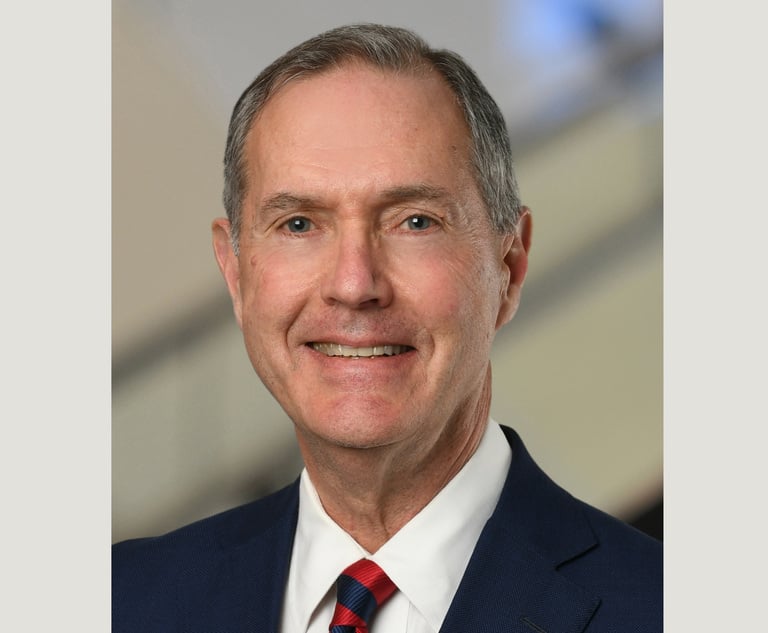Across the Am Law 200, New York Firms Lagged Industry Averages in 2019
New York firms aggressively marked up billing rates, higher than the industry, but their growth was sluggish.
May 18, 2020 at 09:41 AM
5 minute read
 Design: Roberto Jimenez. Photo: Shutterstock
Design: Roberto Jimenez. Photo: Shutterstock
Even before the coronavirus wreaked havoc on the economy, many New York firms were struggling in 2019 to match their performance from prior years.
 What data are you using to stand out in a crowded market? Get the interactive Am Law 200 Data exclusively with Legal Compass.
What data are you using to stand out in a crowded market? Get the interactive Am Law 200 Data exclusively with Legal Compass.
Average revenue growth for 19 elite New York firms in the Am Law 100 was 3.4% last year, according to The American Lawyer's data, down from 7% growth in a similar study the year before. In profits per equity partner, the average growth for these 19 firms was 3.7% in 2019, compared with 8.6% the prior year. Average revenue and profit growth for the Am Law 200 were 5% last year.
There were some standouts. Debevoise & Plimpton saw 12.9% revenue growth, rising above $1 billion for the first time, and 13.4% growth in profits per equity to $3.7 million. Fried, Frank, Harris, Shriver & Jacobson boosted revenue by 13.3% to $776 million and grew PEP by 16% to $3.79 million, as the firm's equity tier ranks remained flat.
But of the 19 firms in the Am Law 100, five saw declines in revenue: Cleary Gottlieb Steen & Hamilton; Cravath, Swaine & Moore; Kramer Levin Naftalis & Frankel; Paul, Weiss, Rifkind, Wharton & Garrison; and Skadden, Arps, Slate, Meagher & Flom. That's in contrast with just one firm in the 2018 study that experienced a revenue decline.
New York lawyers and market observers cite a variety of reasons for the low growth rate in 2019. Cross-border M&A volume declined in the first half of 2019, while premium fees on M&A work slowed down for some. Realization on fees for New York firms declined. And for some Wall Street firms, it was simply hard to match the success of 2018.
Average growth for New York firms in the second half of the Am Law 200 was similarly sluggish. Half of these 12 firms saw revenue drops. Overall, as a group, New York firms in the Second Hundred had slower average growth in revenue and profits than New York firms in the Am Law 100. But the Second Hundred group's average growth in revenue per lawyer, at 4%, far outperformed their Am Law 100 counterparts in New York.
Second Hundred firms with declining revenue last year included Curtis, Mallet-Prevost, Colt & Mosle; Hodgson Russ; Hughes Hubbard & Reed; Kasowitz Benson Torres; and Kelley Drye & Warren.
Overall, New York firms' performance in several metrics was lower than industry averages, according to figures from Citi Private Bank's Law Firm Group. For instance, the average demand in Citi's sample of New York-headquartered firms declined 1.2% in 2019, in contrast with the industry growing 1.1%, according to Gretta Rusanow, head of advisory services at Citi.
Revenue growth in the industry also outpaced New York firms' growth, she notes. The average realization for Citi's New York sample declined by 0.9%, while the industry saw only a 0.5% drop.
But Rusanow also points to a few positive factors in the New York market for 2019, including an improving demand market as the year progressed. New York firms' fourth quarter through early March 2020 saw high levels of activity, she says.
And even though realization declined, New York firms aggressively marked up billing rates, averaging 5.2% for Citi's sample of New York firms, compared with 4.5% in the industry. Ultimately, these New York firms could bring in more money than firms with modest rate increases.
 What data are you leveraging to sell strategy internally? Get the interactive Am Law 200 Data exclusively with Legal Compass.
What data are you leveraging to sell strategy internally? Get the interactive Am Law 200 Data exclusively with Legal Compass.
"The firms that follow the strategy of putting through higher rate increases with a willingness to take a deeper discount have for the past several years realized a wider rate advantage," Rusanow says.
As for 2020, Rusanow says that as of late April, firms across the country were projecting a roughly 15% drop in demand and revenue in the second quarter.
But one advantage for some New York firms is a relatively higher profit margin. Most New York firms in the Am Law 100 had profit margins above 40%. Among the 12 New York firms in the Second Hundred rankings, seven had profit margins above 30%. None reached 40%.
Higher-margin firms "are in different positions in terms of the expense decisions they have to make and the timing of those expense decisions," Rusanow says.
This content has been archived. It is available through our partners, LexisNexis® and Bloomberg Law.
To view this content, please continue to their sites.
Not a Lexis Subscriber?
Subscribe Now
Not a Bloomberg Law Subscriber?
Subscribe Now
NOT FOR REPRINT
© 2025 ALM Global, LLC, All Rights Reserved. Request academic re-use from www.copyright.com. All other uses, submit a request to [email protected]. For more information visit Asset & Logo Licensing.
You Might Like
View All
Law Firms Look to Gen Z for AI Skills, as 'Data Becomes the Oil of Legal'

Law Firms Expand Scope of Immigration Expertise Amid Blitz of Trump Orders
6 minute read
Losses Mount at Morris Manning, but Departing Ex-Chair Stays Bullish About His Old Firm's Future
5 minute read
Law Firms Mentioned
- Cravath, Swaine & Moore
- Kasowitz Benson Torres
- Debevoise & Plimpton
- Fried, Frank, Harris, Shriver & Jacobson
- Curtis, Mallet-Prevost, Colt & Mosle LLP
- Hodgson Russ
- Hughes Hubbard & Reed
- Skadden, Arps, Slate, Meagher & Flom LLP
- Paul, Weiss, Rifkind, Warton & Garrison
- Kramer Levin Naftalis & Frankel LLP
- Cleary Gottlieb Steen & Hamilton
- Kelley Drye & Warren
Trending Stories
- 1Uber Files RICO Suit Against Plaintiff-Side Firms Alleging Fraudulent Injury Claims
- 2The Law Firm Disrupted: Scrutinizing the Elephant More Than the Mouse
- 3Inherent Diminished Value Damages Unavailable to 3rd-Party Claimants, Court Says
- 4Pa. Defense Firm Sued by Client Over Ex-Eagles Player's $43.5M Med Mal Win
- 5Losses Mount at Morris Manning, but Departing Ex-Chair Stays Bullish About His Old Firm's Future
Who Got The Work
J. Brugh Lower of Gibbons has entered an appearance for industrial equipment supplier Devco Corporation in a pending trademark infringement lawsuit. The suit, accusing the defendant of selling knock-off Graco products, was filed Dec. 18 in New Jersey District Court by Rivkin Radler on behalf of Graco Inc. and Graco Minnesota. The case, assigned to U.S. District Judge Zahid N. Quraishi, is 3:24-cv-11294, Graco Inc. et al v. Devco Corporation.
Who Got The Work
Rebecca Maller-Stein and Kent A. Yalowitz of Arnold & Porter Kaye Scholer have entered their appearances for Hanaco Venture Capital and its executives, Lior Prosor and David Frankel, in a pending securities lawsuit. The action, filed on Dec. 24 in New York Southern District Court by Zell, Aron & Co. on behalf of Goldeneye Advisors, accuses the defendants of negligently and fraudulently managing the plaintiff's $1 million investment. The case, assigned to U.S. District Judge Vernon S. Broderick, is 1:24-cv-09918, Goldeneye Advisors, LLC v. Hanaco Venture Capital, Ltd. et al.
Who Got The Work
Attorneys from A&O Shearman has stepped in as defense counsel for Toronto-Dominion Bank and other defendants in a pending securities class action. The suit, filed Dec. 11 in New York Southern District Court by Bleichmar Fonti & Auld, accuses the defendants of concealing the bank's 'pervasive' deficiencies in regards to its compliance with the Bank Secrecy Act and the quality of its anti-money laundering controls. The case, assigned to U.S. District Judge Arun Subramanian, is 1:24-cv-09445, Gonzalez v. The Toronto-Dominion Bank et al.
Who Got The Work
Crown Castle International, a Pennsylvania company providing shared communications infrastructure, has turned to Luke D. Wolf of Gordon Rees Scully Mansukhani to fend off a pending breach-of-contract lawsuit. The court action, filed Nov. 25 in Michigan Eastern District Court by Hooper Hathaway PC on behalf of The Town Residences LLC, accuses Crown Castle of failing to transfer approximately $30,000 in utility payments from T-Mobile in breach of a roof-top lease and assignment agreement. The case, assigned to U.S. District Judge Susan K. Declercq, is 2:24-cv-13131, The Town Residences LLC v. T-Mobile US, Inc. et al.
Who Got The Work
Wilfred P. Coronato and Daniel M. Schwartz of McCarter & English have stepped in as defense counsel to Electrolux Home Products Inc. in a pending product liability lawsuit. The court action, filed Nov. 26 in New York Eastern District Court by Poulos Lopiccolo PC and Nagel Rice LLP on behalf of David Stern, alleges that the defendant's refrigerators’ drawers and shelving repeatedly break and fall apart within months after purchase. The case, assigned to U.S. District Judge Joan M. Azrack, is 2:24-cv-08204, Stern v. Electrolux Home Products, Inc.
Featured Firms
Law Offices of Gary Martin Hays & Associates, P.C.
(470) 294-1674
Law Offices of Mark E. Salomone
(857) 444-6468
Smith & Hassler
(713) 739-1250










